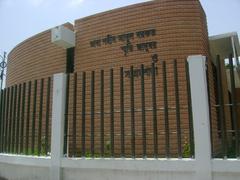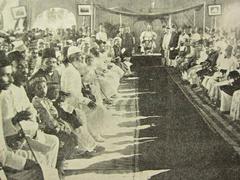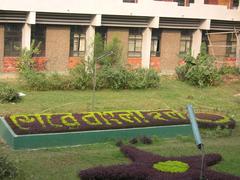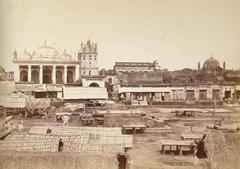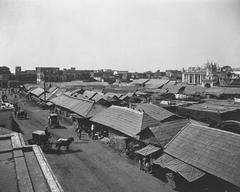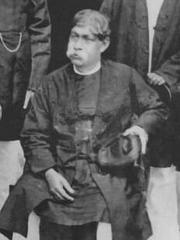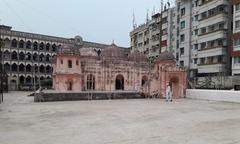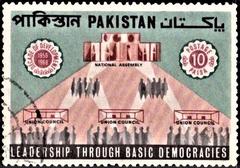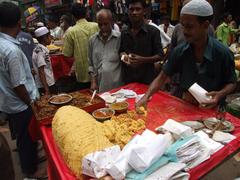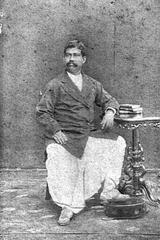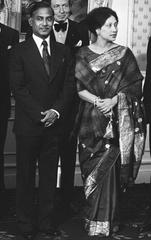Haji Biriyani Dhaka: Visiting Hours, Tickets, and Comprehensive Guide
Date: 04/07/2025
Introduction
Haji Biriyani in Dhaka is more than just a restaurant—it is a culinary institution that embodies the rich gastronomic traditions and vibrant social life of Old Dhaka. Since its founding in 1939 by Haji Mohammad Hossain, this iconic eatery has become synonymous with authentic Dhakai biryani, drawing locals, tourists, and food connoisseurs eager to experience genuine Mughal-influenced flavors. This guide provides an in-depth overview of Haji Biriyani’s history, cultural significance, practical visitor information, and tips for making the most of your visit (Food With Tour, Wikipedia).
Table of Contents
- Introduction
- Origins and History of Haji Biriyani
- Mughal Influence and Biryani’s Evolution in Dhaka
- Cultural Significance
- Visiting Information
- Dining Experience
- FAQs
- Conclusion and Recommendations
- Sources and Further Reading
Origins and History of Haji Biriyani
Founded in 1939 by Haji Mohammad Hossain, Haji Biriyani began as a small roadside eatery in the Nazira Bazar area of Old Dhaka. Its signature biryani recipe—a fragrant blend of basmati rice, tender goat meat, mustard oil, and a unique mix of spices—has been carefully preserved by Hossain’s descendants for over 80 years (Food With Tour). The use of jackfruit leaf packets for serving not only adds an authentic touch but also imparts a subtle aroma to the dish, linking present-day diners with generations past (Hive Blog).
The restaurant’s legacy extends beyond its kitchen. Haji Biriyani played a pivotal role in popularizing biryani as an everyday meal in East Bengal, transforming it from a Mughal-era elite delicacy to a beloved staple for all classes (Global Voices).
Mughal Influence and Biryani’s Evolution in Dhaka
Biryani arrived in Bengal with the Mughal Empire, and Dhaka quickly became a hub for culinary adaptation. Haji Biriyani’s recipe reflects this legacy, combining the lush spices and aromatic basmati rice of the Mughal tradition with local twists—most notably the use of mustard oil and the distinctive jackfruit leaf packaging (Khalil’s Food, Heritage Bangladesh Foundation). Over time, Dhaka biryani became lighter and more aromatic than other regional variants, with a focus on fresh herbs and balanced spices.
Cultural Significance
Haji Biriyani is deeply woven into Dhaka’s social fabric, serving as a go-to spot for celebrations, family gatherings, and religious festivities (Khalil’s Food). Its enduring popularity has inspired countless imitators, but the original’s commitment to traditional preparation and presentation sets it apart as a gold standard for authentic Dhakai biryani (Hive Blog).
Visiting Information
Hours and Entry
- Opening Hours: Daily, 8:00 AM to 10:45 PM (Trip101), though biryani can sell out before closing—arriving before 2:00 PM is recommended, especially on weekends.
- Entry/Tickets: No tickets or reservations are required; seating is first-come, first-served.
Location and Directions
- Address: 70 Kazi Alauddin Road, Nazira Bazar, Old Dhaka (hajibiriyani.com)
- Getting There: The easiest way is via rickshaw or ride-sharing apps like Uber or Pathao, given Old Dhaka’s narrow, busy streets. CNG auto-rickshaws are also popular.
Accessibility and Facilities
- The original branch is in a traditional building with narrow entrances, uneven sidewalks, and basic facilities. Wheelchair access is limited; consider takeaway or visiting newer branches in Motijheel or Jamuna Future Park for better accessibility.
Parking and Transport
- Parking: Very limited near the Old Dhaka branch due to crowded alleys—public transport or rickshaw is advised.
- Public Transport: Buses serve the area, but routes can be confusing for non-locals; combine with a short rickshaw ride if needed.
Nearby Attractions
Enhance your visit by exploring these nearby historical sites:
- Lalbagh Fort (approx. 1.5 km away)
- Ahsan Manzil (Pink Palace) (approx. 2 km away)
- Sadarghat River Port (approx. 2.5 km away)
- Beauty Lacchi & Faluda—a historic dessert shop perfect for a post-biryani treat (The Business Standard)
Food Tours and Special Events
While Haji Biriyani does not organize special events, many Old Dhaka food tours feature it as a highlight, offering guided tastings and historical insights (MakeMyTrip).
Dining Experience
Haji Biriyani’s atmosphere is lively and communal, with simple seating and fast-paced service. Orders are placed at the counter; payment is cash only (expect to pay around 200–250 BDT per plate). The biryani is served on plates for dine-in and wrapped in jackfruit leaves for takeaway, adding a traditional and eco-friendly element (Hive Blog). Pair your meal with the tangy borhani yogurt drink for a complete experience.
Hygiene aligns with traditional street-food standards; bringing hand sanitizer or wipes is recommended for those with sensitive stomachs.
Practical Tips
- Language: Staff mainly speak Bangla; translation apps or written orders are helpful.
- Dress Code: Modest, casual attire is appropriate.
- Payment: Cash only; carry small bills.
- Peak Hours: Lunch (12:00–2:30 PM) and dinner (6:00–9:00 PM) are busiest.
- Takeaway: Available; delivery may be possible through local apps like Foodpanda (coverage may vary).
- Etiquette: Sharing tables and eating with your right hand is customary.
Frequently Asked Questions (FAQs)
Q: What are the opening hours?
A: 8:00 AM–10:45 PM daily, but biryani may sell out earlier.
Q: Is there an entry fee or need for reservations?
A: No entry fee or reservations required.
Q: Are vegetarian options available?
A: The menu focuses on mutton biryani; vegetarian options are limited.
Q: Is the restaurant wheelchair accessible?
A: Accessibility is limited at the original branch; newer branches have better facilities.
Q: Can I take away food?
A: Yes, takeaway is available, traditionally wrapped in jackfruit leaves.
Q: Are guided food tours available?
A: Yes, several local tours include Haji Biriyani as a featured stop.
Q: What payment methods are accepted?
A: Cash only; bring small denominations.
Conclusion and Recommendations
Haji Biriyani stands as a quintessential destination for food lovers and cultural enthusiasts visiting Dhaka. Its storied history, unwavering commitment to tradition, and unique flavors offer an authentic window into Bangladesh’s Mughal-influenced culinary heritage. For the richest experience, plan your visit during off-peak hours, use convenient transport options, and pair your meal with explorations of nearby historical sites. Remember to bring cash, embrace the lively atmosphere, and savor a meal that has delighted generations.
To stay updated on Dhaka’s evolving food scene, download the Audiala app and follow our related articles for curated guides and insider tips.
Images
Alt text: Plate of Haji Biriyani served at the Old Dhaka restaurant
Alt text: Interactive map showing Haji Biriyani location in Old Dhaka
Related Articles
Sources and Further Reading
- Haji Biriyani Dhaka: Visiting Hours, History, and Why It’s a Must-See Culinary Landmark, 2021, Food With Tour (Food With Tour)
- Haji Biriyani, Wikipedia (Wikipedia)
- Mughal Influence and the Evolution of Biryani in Dhaka, Khalil’s Food (Khalil’s Food)
- Biryani Stories: How Dhaka’s Biryani Went from Being the Food of the Elites to the Dish Everyone Eats, 2019, Global Voices (Global Voices)
- Food in Dhaka: A Guide to Dhaka’s Culinary Highlights, TravelSetu (TravelSetu)
- Best Foods to Try in Old Dhaka, Travel Vibe (Travel Vibe)
- Exploring Past Through Old Dhaka Food Map, The Business Standard (The Business Standard)
- Haji Biriyani The Traditional Food of Old Dhaka, Hive Blog (Hive Blog)
